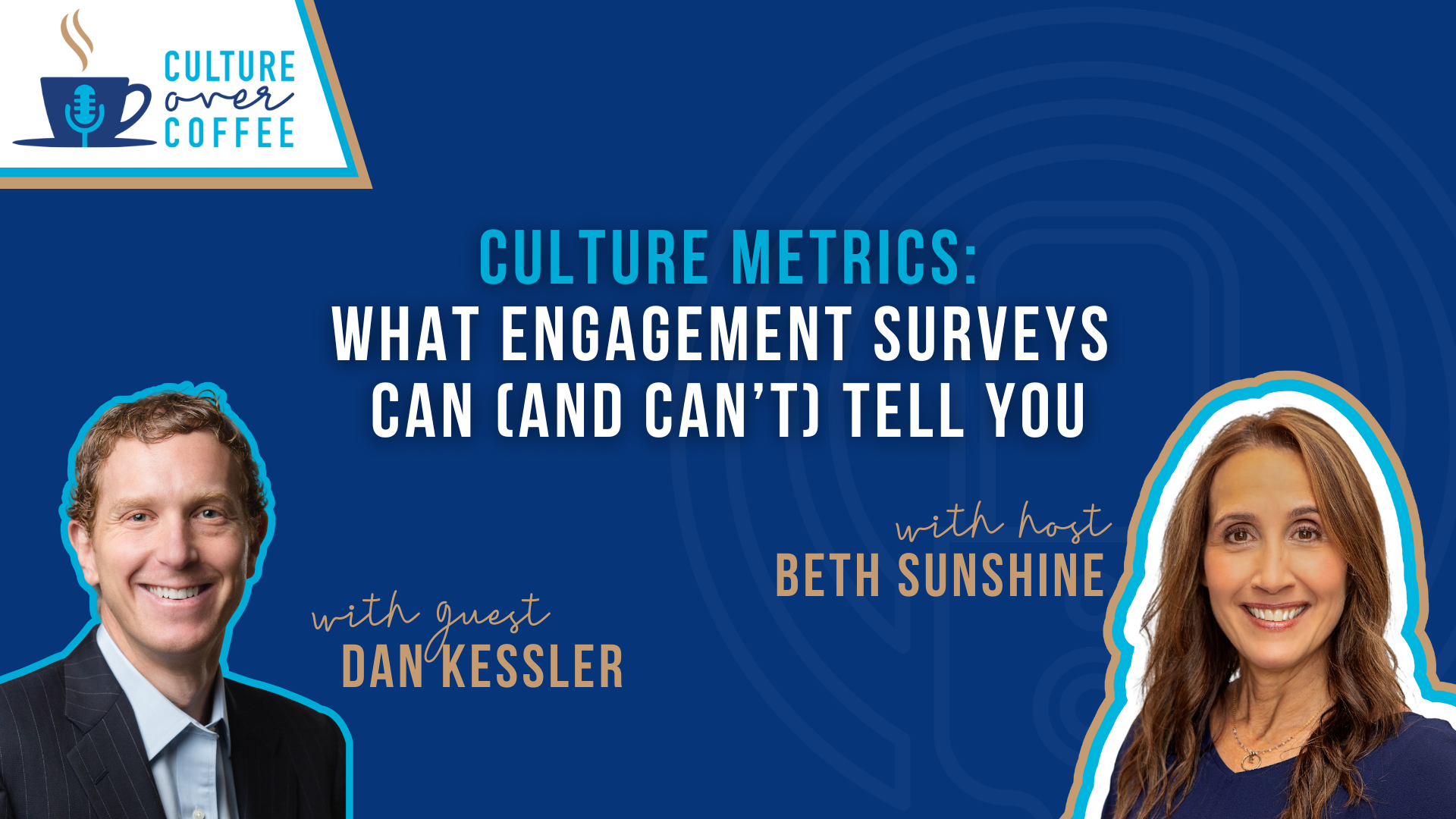
Have you ever looked around at work and thought, “I wish everyone else was as invested in their job roles as I am?” Or, maybe you’ve felt like you’re the one just ‘going through the motions’ and everyone around you seems like they have a sense of purpose in their work that you’re missing.
Both of those feelings are related to engagement levels: your personal level of engagement in your role, along with the levels of engagement in your coworkers and direct reports. In Engage 2024: The Company Culture Report, we learned that overall levels of engagement have dwindled over the last year.
Why are engagement levels dropping, and what can you do to help?
Engagement: The Critical Piece to Business Success
Employee engagement is defined as one’s emotional commitment and willingness to give their best at work. Companies with strong cultures and high levels of employee engagement outperform all the others. Amongst many benefits, these companies see:
- Revenue increases 4xfaster
- Job creation rates 7x higher
- Stock price increases 12x faster
- Profits that climb 750% higher
- New revenue growth by 700% more
- Customer satisfaction doubled
The ROI of strong cultures and high levels of employee engagement is clear. Companies with weak cultures and low employee engagement see decreased productivity, lack of communication, increased absenteeism, low retention, minimal innovation, and lower customer satisfaction rates. It also dangerously increases the possibility that your highly engaged employees will become burnt out.
The Current State of Engagement
Engagement levels have decreased a whopping 22% over the past year. The 2023 Engage survey revealed that 77% of respondents felt engaged at work. That’s compared to only 55% of respondents in the Engage 2024 who currently report feeling engaged.
In addition, 86% of 2024 respondents report working side-by-side with someone they believe is actively disengaged.
Many factors are likely contributing to lower engagement levels. Companies have continued to pull people back into the office without a full explanation why, recruitment is difficult – so many are asking to do more with less, and we live in a more expensive economy right now where many haven’t received their typical pay raises. You may even be able to think about specific situations happening right now at your workplace that are having an impact.
It’s critical to stop the downward engagement spiral before it has lasting, detrimental effects on organizations.
Two Strategies to Reverse the Engagement Trend
We know that leaders account for 70% of the engagement variance across their teams. People want to work for managers who consistently motivate them and help cultivate their overall growth.
To begin moving the needle on engagement, it’s vital to gain a true understanding of how people are currently feeling. The best way to do this is to conduct a culture and engagement survey.
- Once the survey is complete, identify your weaknesses.
- Pinpoint the items that scored lower than you’d like but that simultaneously have a high impact on employee engagement.
- After identifying those items, select one that everyone can rally around and focus on.
Spreading yourself too thin by focusing on too many areas at a time will lead to little growth or change, but identifying one area for everyone to lean in and focus on will have a tremendous impact.
Another important step in reversing the engagement trend is identifying the factors that matter most to your people and managing them individually based on their needs.
The Golden Rule
Most of us were raised by the Golden Rule, which told us to treat others the way we want to be treated ourselves. That’s not bad guidance – we all expect others to be kind and should treat others with kindness in return.
If you’re managing people, though, the Golden Rule just doesn’t cut it. Every person you lead is wired differently than the others and likely wired differently than you as well.
While you may enjoy public recognition in front of your entire team, one of your direct reports may not. While many on your team may enjoy discussing their personal lives, one person may not enjoy bringing personal details into the workplace.
The Platinum Rule
Instead of the Golden Rule, commit to managing your people by the Platinum Rule: treat others how they would like to be treated. Use a relationship-building tool, like the Growth Guide, to help you understand how each of your direct reports wants to be treated.
Be sure to walk away with a clear understanding of their communication preferences, what their growth aspirations are, the ways in which they learn best, and how they like to be recognized.
The ROI of Engagement
Strengthening your culture and increasing levels of employee engagement doesn’t happen overnight. It takes a lasting, concerted effort from every single leader in an organization. It often takes 18-24 months before companies begin to see change. People need time to believe that the change will stick before they’re fully bought in.
Don’t sleep on dwindling levels of engagement. The ROI of engagement is clear (and so are the risks of low engagement levels). It’s time to take action!










Leave a Comment